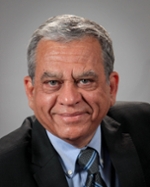Recent News
Not your mother’s nanomedicine: NIH grant targets safer medication for women
October 20, 2025
AI tensor network-based computational framework cracks a 100-year-old physics challenge
September 16, 2025
Postdoctoral research fellow wins 1st place in conference poster presentation
August 25, 2025
Engineering a new treatment for ovarian cancer
June 24, 2025
News Archives
Datye recipient of 2019 Burwell Lectureship in Catalysis
March 4, 2019

Professor Abhaya Datye and his research group have performed elegant and creative experiments that have clarified relationships between the atomic-level structure of heterogeneous catalysts and their reactivity and/or stability. He has introduced new approaches to doing catalysis research (e.g., model catalysts and sample preparation techniques) that enabled the use of electron microscopy to study industrially relevant catalysts. He thus elucidated important fundamental concepts that are crucial for designing catalysts for improved performance. He showed how catalytic activity is enhanced due to oxidation-induced roughening of metal surfaces in nanoparticles, and how phase transformations in Fe Fischer-Tropsch catalysts can cause catalyst attrition. A major contribution was the use of electron microscopy and sintering rate equations to uncover atomic-scale mechanisms of catalyst sintering. Recently, his group described a method for generating stable monomeric Pt species on the surfaces of a ceria support, termed atom trapping. In this work, high temperatures, which normally destroy catalysts, enable the synthesis of thermally stable single atom catalysts (SACs). By studying the trapping of mobile atoms on the support, his group has improved our fundamental understanding of catalyst regeneration. These insights have led to many creative ideas for new sinter-resistant catalyst materials that have great industrial relevance.
